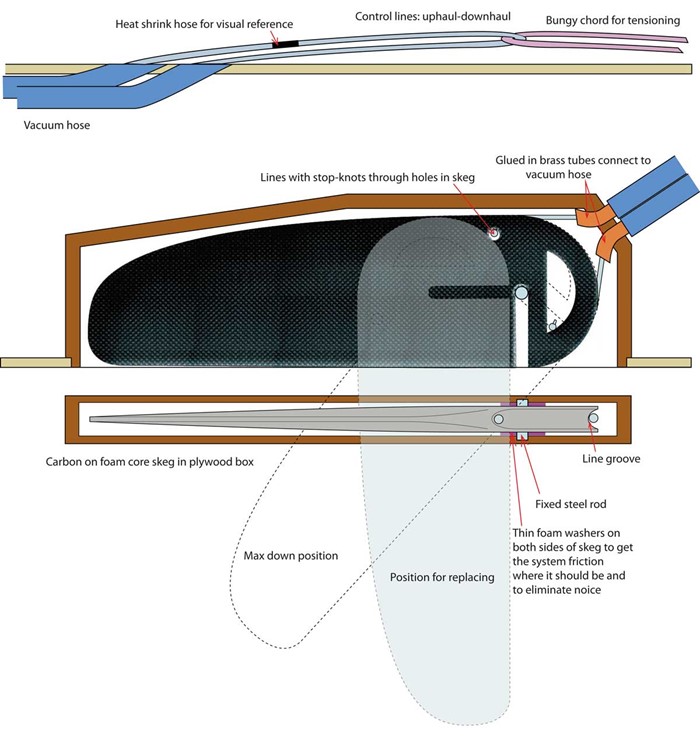Simple skeg system
Senast uppdaterad den 28 maj 2016, 4 kommentarer
The skeg system has been in use for eight years on my Njord and has never given me any trouble. It is a NACA foil and very efficient. It is easily repaired anywhere without any tools: a spare blade or new lines can be fitted in minutes – pull the skeg vertical, pull it aft and it is free. The 3 mm gap between box and skeg is of course not hydrodynamically ideal but keeps the skeg from getting stuck with sand. The foam washers keep the skeg clatter-free in waves and keep the system friction where it should be – on the skeg, not the lines, thereby ensuring that the lines do not jam in the box. The one disadvantage this far is that it is a bit highly “geared” – meaning that the control line travel just 5 cm between up and down, making precision adjustments a bit tricky. But it is not a big issue – in a situation you tug on the line and 95% of the problem is gone. The fine adjustment can be done later when things calm down. The skeg is built on a plywood core to stabilize the perimeter and the pulley part. The center areas of the blade are filled with foam to keep the weight low. The box is thin hardwood pieces between 4 mm plywood sides – or a more elaborate fiberglass box. The brass tubes I used on the prototype, is perhaps better replaced with suitable tube fittings (the best kind of low friction tube is made of a plastic that is very hard to glue).

Björn
